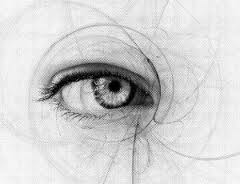
Our Puzzle Box – Part I of 2
Life is an interesting puzzle box, given that we have no manual to our bodies, mind or the reality around us, yet here we are. We stumble around focusing on physical actions and outcomes, things that we see as objectively verifiable. In terms of the mind, it is hard to equate a thought to a particular outcome. I am not referring to thoughts that lead to body movements, those applied to problem solving about and so on. I am referring to the thoughts about other thoughts. These are the thoughts that bind us to our reality. They are the primary creator of the cohesive whole we perceive as reality. If we want to open the puzzle box, then understanding its creator is a good place to start.

This is and has always been the path of those who just want to know a little more or to make their lives a little better, richer and more balanced as it is of the seeker. Opening our individual puzzle boxes can help us to feel more at peace with ourselves, aid those that have retained certain “gifts” into adulthood and who may want to understand it better as it can those seeking access to their innate abilities. As I have said before, we are all where we are for various reasons so it matters not which we are.
I cannot tell anyone what path to walk, what I can do is suggest ideas that I believe can help one open the box as little or as much as they are to in this lifetime. I will not go into all the aspects in detail, as that material is already present on The Twin Powers website. What I will do is try to pull the pieces together to provide an overview of what one can do with their mind(s) alone, to unlock a little more of themselves. That is I will suggest ways to open the puzzle box.
Figuratively speaking, our minds are our puzzle box, one that locks our true self inside. Its foundation lies in our experiences, in many ways dominated by the earliest ones we had. Subsequent reactions to experiences built upon and add to them so that our puzzle box has many interconnected layers; hence, pulling on one will affect the others like an enormous vibratory Rubik cube.
With a first general observation of our puzzle box, you will notice that we are looking away from it rather than at it. This is often referred to as the “I” perspective and with this comes the notion that everything occurs outside of us independently, instead of the idea that what occurs is because of the puzzle box itself. Unlocking the puzzle box is not so much a matter of effort, as it is of perspective. Simply trying to make sense of what perceive such as the events in our lives or the world will not give us the answers we seek. Answers will only come when we turn our keen perceptions and awareness on ourselves.

Turning ones attention inward is not easy to do. One does not turn a ship in an instant, at least not generally. In this case, the ship is our rational mind. No matter how resistant ones rational mind may be there are ways one goes about doing this, ones that we do deliberately, with our intent behind them. In this case, our intent is to balance our thinking mind so that the puzzle box begins to open on its own.
If we knew how to open our puzzle box, we would have done so already. Our puzzle boxes are not like a locked safe, it has no door or keyhole. The only way to unlock the puzzle box is to modify the box itself, something we cannot do if we our focus is what is going on outside of us. See it more like a maze of mirrors and walls. What we want to do is get them in better order so that what is within can come out without restrictions. To do so we need to focus on:
- Our intent and desire
- Take a more active role moment by moment
- Work on our thoughts and beliefs
- Make ourselves more transparent (the Rational Mind that is)
Our Intent and Desire
Ones intent is pivotal, for it is the background thought that guides our non-conscious efforts as well as our conscious ones. Intent is an aim or purpose, or a direction, though not to a physical place or time. Ones intent can start with a general direction or goal; however, to make real progress this should be more defined and focused. This can take time so we should not get down on ourselves as we go through this process. For example, one can start with “I want to deal with my emotions better”, “I want to be a better person”, “I want to open up my awareness” or “I want more balance” rather than “I want to become empathic”, “I want to become enlightened” or “I want wisdom”.
To make any progress our intent cannot be a casual thought; it must be a strong and commanding so that it holds at least a portion of your attention a significant amount of the time. You must make some degree of commitment to it. Without this progress will be slow and intermittent, not that this is bad, just do not expect progress to be quicker without it. Also, try to avoid having multiple intents as this leads the mind to uncertainty as which one to deal with when and it is possible they could be in conflict.

In order to have a strong thought we must formulate it. A vague thought is like smoke in the wind, easily disbursed by even a light breeze. To forumate our intent we must anchor it to something. If we are looking for more balance in our lives we must consider what this means, the means would be the anchor. We do this with our thoughts, however, the most potent method is visualization. Begin to see what you intend in your mind’s eye and imagine it connected to all aspects of your life. See yourself in balance when as now you might be stressed over the situation; see yourself acting in an open, caring and loving way in all you do. You should be able to picture yourself in various situations acting as you would like to.
Energy follows intention, thoughts are energy; hence if you want to manifest change you must imagine the change, see it in your minds eye. At this point you are not concerned with how you might get there, only that that is what you intend. I am not a firm believer in intended to “get things”. Things will not make us happier, feel better about ourselves and so on, with the exception being those struggle for the necessities. Our need for things comes from the rational mind, and is part of the puzzle box; however, when we seek to obtain them we turn our attention without which keeps us trapped within the box. Our answers do not lie there. If things are truly in our best interests, or as in this example, would make us “happier” then we will attract them.
The other primary element is desire, though desire in the sense of lusting for something, it is the impetus or will to act. You may have heard that one should avoid desire. While this is true it matters most when one is nearer to enlightenment, before then it can help us. Note that by desire I am not referring to lusting for what we intend, rather the will to manifest what we intend. Note that if my intent is to seek balance in life, the desire or will one needs is not the desire to “become" more balanced”. The desire is simply "to be" balanced.
Will is not something you can imagine. It is an aspect of our core self in a way that intent is not. Intent directs our will, it is associated with the mind, but the self cannot go anywhere without will. We must, in a sense want or choose to do “something”. In many cases, without attention, our rational mind expresses our will by manifesting what our programming "dictates". We can develop our will by many means; one overlooked way being by reaction to what we do not "like". Continuing the example, if I am out of balance now the will I seek is the will to empower my intent to be "in a different state". We will only change when we are ready and not before.
Naturally, intent and desire go hand in hand though that they may come at the same time. One may feel the desire to change and then need to consider what that means or one may decide they would be better off if more balanced and then work on the developing the desire to make that change.
It does not matter which one you develop first, only that you develop both. Remember to commit to your intent and not be haphazard or casual about it and that your desire is sufficient to support it. If you have chosen a harder path then you must ensure you have the strength of will to see it through. This may mean you should not set your sights too high or too far away. You want to be able to achieve some successes or else sustaining your desire will prove difficult. Over time, small successes will help you develop more faith and trust in your will and intentions. Only then should you set your sights a little higher or further down the road.
You can test your intent and desire at any time by simply stopping what you are doing and examining yourself. Think about your intent and commitment to it. If you are honest, and calm at the time you do so you should be able to feel any consternation. Feeling it does not mean you have failed, it means you need to reinforce it or re-evaluate it.
Take a more active role moment by moment
With our intent and desire in place, we start to try to pay more attention to our lives each moment. We put ourselves on cruise control far too much. We have a destination to get, to a task to complete even a future to realize and so on. Or we allow our minds to think of what should or could have been, what we did not like about our past and would have liked to change. Doing so keeps the mind stuck looking out and not in at the puzzle box. The puzzle box determines our outcomes, hence in order to change our outcomes we must examine the box. This is where we need our desire or will and intentions, we must want to examine the box.
Examining the puzzle box means paying attention to our thoughts and feelings as we experience them. This does not mean ignoring them, glossing over them or thinking they have no impact on us; this is certainly not the case. We are what we think. What we think is the assimilation or summary of all reactions we have had to every experience and the integration of those thoughts with all others. This is our rational mind and our rational mind is the puzzle box, the “I” that keeps us separate from ourselves. It matters not whether our goals are simple or high and lofty; in order to change in any significant way we must reduce or remove that separation.
In order to pay more attention moment by moment we must want to. Be prepared for your thinking mind to resist this. It does not do so to sabotage your efforts, though this may very well be the result. It merely seeks to maintain the status quo and change upsets that. Resistance can take the form of distractions; one may find they never have the time to focus on their goal as life keeps them busy. It could take the form of questioning ones intent, such as “is this really important now?” or “is this actually relevant?” Everything we think and do is potentially relevant and paying attention to what we think and feel is important if we are to fulfil our intent.

Overcoming the resistance means reprogramming our mind so that the status quo is no longer acceptable. We program our rational mind by our reactions to experiences. If in the present, our reaction is that the status quo does not work for us any more we must have this thought in mind as we did for our intent. We tie this to our intent and desire by associating this change as a requirement to meet our intent. This allows us to apply the will that is supporting our intent to it. This will manifests a thought form that will “push back” against the thoughts that resist it. We must be firm in this as we were in formulating our intent.
We can firm up our intent and our unwillingness to go with the status quo through meditation. In this case, we go through the process of relaxing then grounding, clearing and centering. After doing so we consider our intent or our thoughts about changing. Always keep these thoughts positive, for instance do not give yourself a hard time for resisting change, merely reinforce your intent that change is good and positive for you. As you do so, imagine the new thought interacting with every other thought about change and that they are all “resonating with the same idea”.
You may need to force the visualization as some of the thoughts may more resistant. You do not have to know what those connected thoughts are, though you may very well get some impressions of them if your mind is still enough. What you need to do is, when you imagine the thought interacting, intend for every thought to be connected and then will this to be so. I cannot tell you “how to will it”, I can only suggest that as you think the thought not just believe, completely trust that it resonates with all common thoughts. When you have this imagine they are all in harmony with the new thought. Focus your will on this. You may think that this is too hard; however, we do this all the time, though not typically with thoughts that benefit us and often sub- or non-consciously.
At this point, we are not trying to change our thoughts and feelings; we simply seek to acknowledge them. They have been hiding in plain sight, though we generally do not know their names. The next step is to choose to know them and to feel comfortable with doing so. We can reaffirm this in meditation, and check from time to time that we are indeed doing so for life can get busy and chaotic!
As you go about your day take time to, as they say, smell the roses. One way to do this is to break our routines. We all have them, and if you look you can find yours. Pick one and the next time it comes up try something different and give yourself fully to it. Do not think about your old routine, only do something – spontaneous!

By doing so, you should notice more about the experience. While it may not happen at first, if you continue to embrace spontaneity, your rational mind will be, in those moments, like that of the child. You will be manifesting new thoughts rather than going with the same old ones. You will feel the wonderful rush of coming to a new understanding, a process that affects other thoughts in your rational mind. In the process, you will have unraveled part of your puzzle box.
End of Part 1
==> Continue to Our Puzzle Box Part 2 of 2
© 2011 Allan Beveridge
Last edited September 12, 2016
